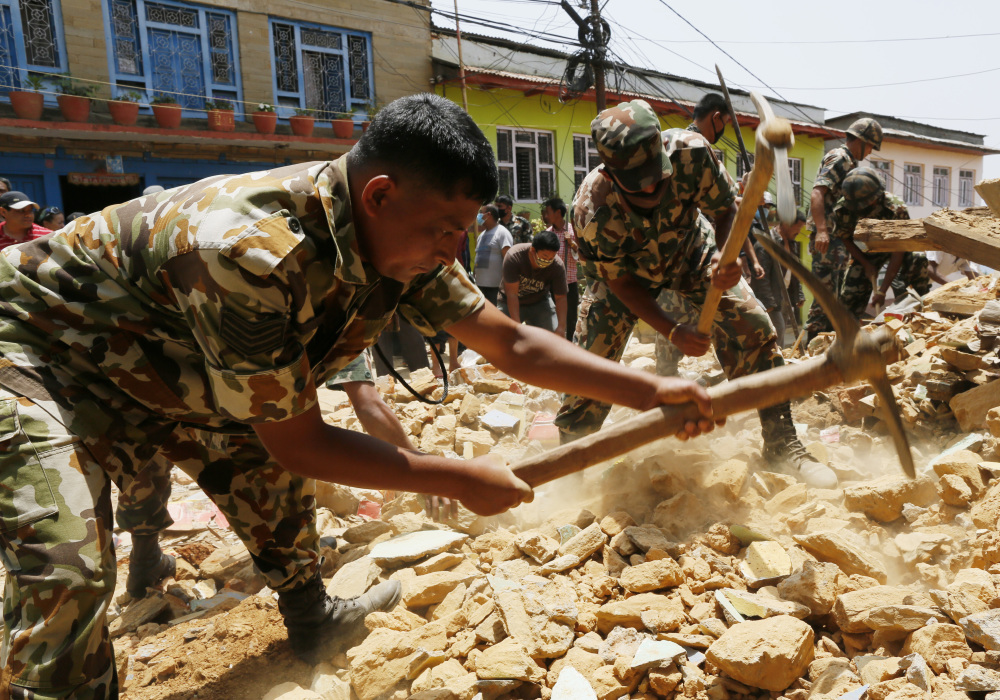KATHMANDU, Nepal — Nearly a week after a massive earthquake killed more than 6,200 people and collapsed buildings, temples and homes, Nepal still urgently needs basic aid like shelter and food, while remote villages remain cut off from help.
Aid workers still face “immense logistical challenges,” U.N. humanitarian chief Valerie Amos said Friday, noting that the scale of the devastation in Nepal would be an obstacle for any government.
The U.N. has estimated the magnitude-7.8 quake that struck April 25 affected 8.1 million people – more than a fourth of Nepal’s population of 27.8 million.
In Kathmandu, rescue workers in orange jumpsuits continued to search through collapsed buildings, but fewer tents were standing in a central part of the capital that had been packed with people in the first few days. Some residents who had been fearful of aftershocks have left the city or moved elsewhere.
The government announced it was giving the equivalent of $1,000 to families of each person killed and another $400 for funeral costs, state-run Nepal Radio said Friday.
More than 130,000 houses were destroyed in the quake, according to the U.N. humanitarian office. Near the epicenter, north of Kathmandu, whole villages were in ruins, and residents were in desperate need of temporary shelters against the rain and cold.
Isolated hamlets are still cut off because scarce helicopters can’t land in some mountainous areas, and roads have often been destroyed, said Amos, who flew over some of those places during a three-day visit.
“Of course we are worried that it is taking so long to get to people who desperately need aid. Some of those villages are virtually flattened. But it’s very, very hard to see how we’re going to get to them,” she said.
Some villagers might be able to walk to a place where the aid helicopters could land, but that would be of little help to those who are injured, she added.
Tents and tarpaulins are the most urgent need, but there’s also a demand for water, food, health care and better sanitation. Debris must be removed, bodies recovered, and officials need to determine which buildings are too dangerous to enter, Amos said.
In the past 48 hours, the U.N. Children’s Fund, or UNICEF, has delivered nearly 30 metric tons of supplies, including tents, water purification tablets and first aid and hygiene kits.
Copy the Story LinkSend questions/comments to the editors.



Success. Please wait for the page to reload. If the page does not reload within 5 seconds, please refresh the page.
Enter your email and password to access comments.
Hi, to comment on stories you must . This profile is in addition to your subscription and website login.
Already have a commenting profile? .
Invalid username/password.
Please check your email to confirm and complete your registration.
Only subscribers are eligible to post comments. Please subscribe or login first for digital access. Here’s why.
Use the form below to reset your password. When you've submitted your account email, we will send an email with a reset code.